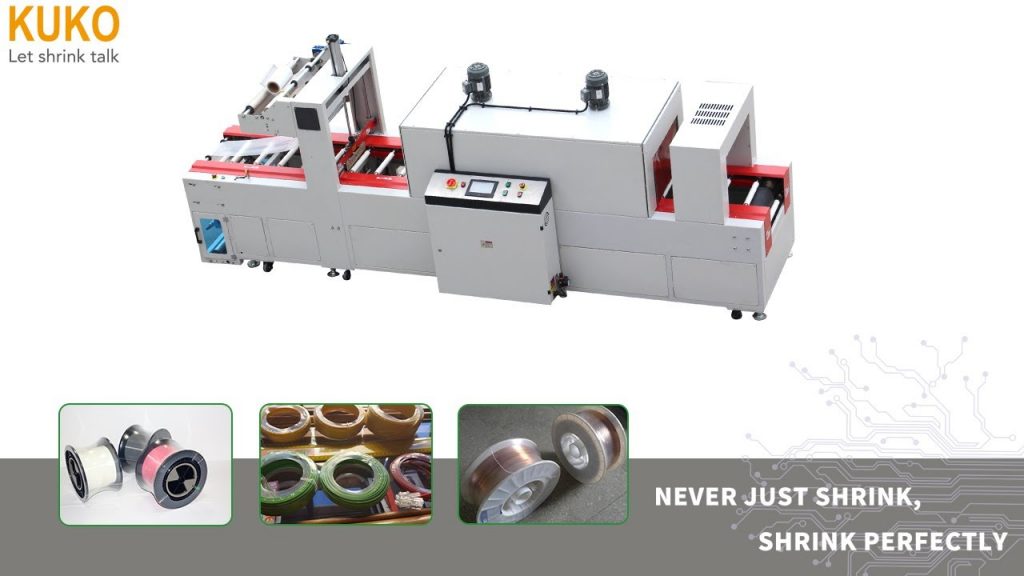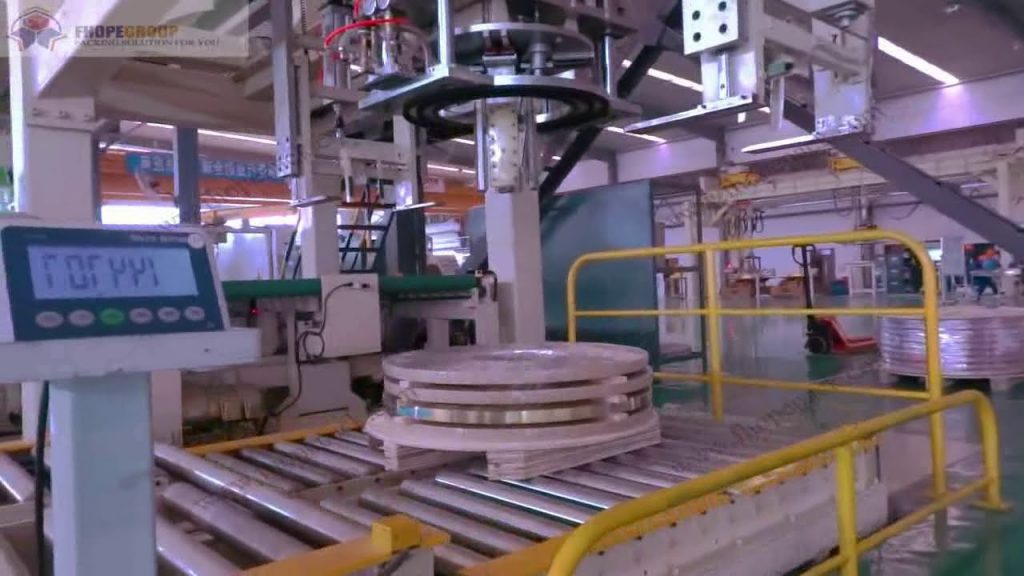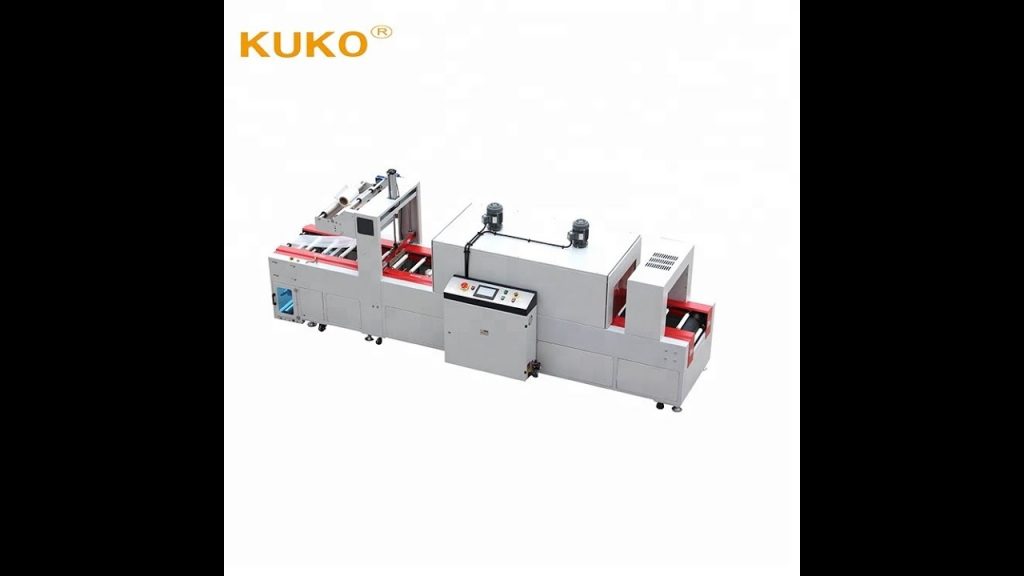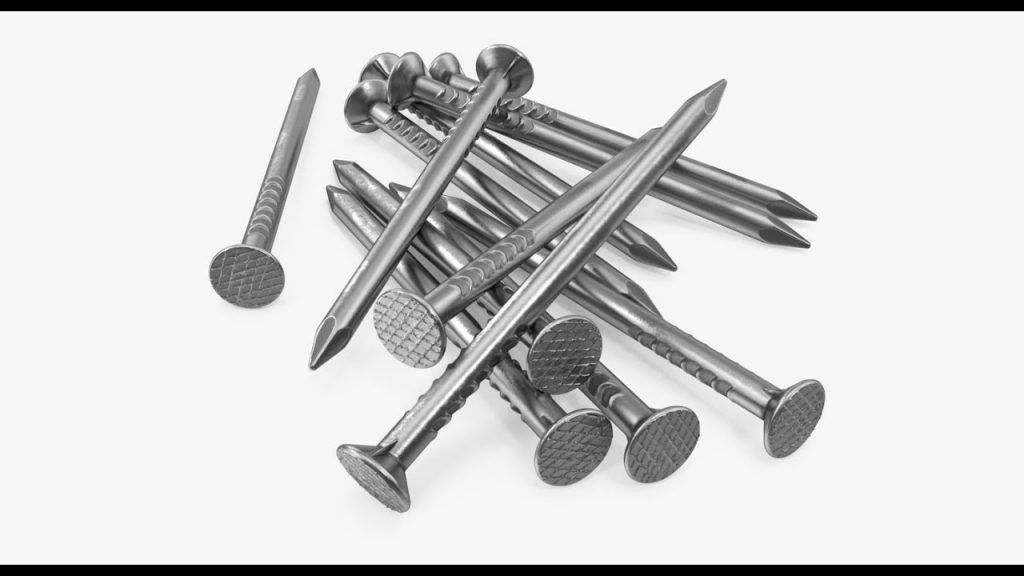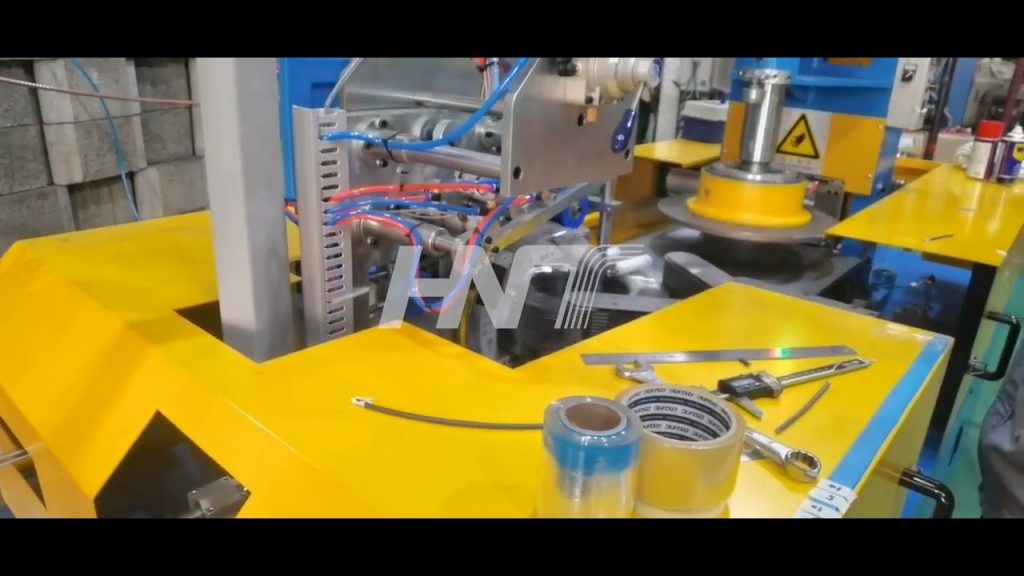Automatic vs Semi-Automatic Coil Wrapping Machines: Which is Better?
For businesses handling metal coils, efficient packaging is paramount. Securing these coils for storage and transit is not just about presentation; it's about protecting valuable inventory and ensuring safe handling. Two primary technologies dominate coil wrapping: automatic and semi-automatic machines. Choosing between them is a critical decision, impacting productivity, cost, and operational efficiency. Semi-automatic coil wrappers offer flexibility and lower initial costs for diverse coil sizes and smaller volumes. Automatic coil wrappers maximize efficiency and minimize labor for high volume, standardized coil production. Understanding the strengths and weaknesses of each system is crucial for making the right investment.
Understanding Your Coil Wrapping Needs
Before diving into machine specifics, consider your operational landscape. What are your typical coil dimensions and weights? What's your daily or hourly throughput requirement? Do you handle a wide variety of coil sizes, or are your coils relatively uniform? These questions are fundamental because the ideal wrapping solution is deeply intertwined with your specific needs.
Manual coil wrapping, while still practiced in some smaller operations, is increasingly recognized as inefficient and potentially inconsistent. It's labour-intensive, slower, and can lead to variable wrapping quality, increasing the risk of damage during transit and storage. Both semi-automatic and fully automatic machines offer significant improvements over manual processes, bringing consistency, speed, and reduced labour costs to the table.
Semi-Automatic Coil Wrapping Machines: Operator-Assisted Efficiency
Semi-automatic coil wrapping machines represent a step up from manual wrapping. They automate key parts of the wrapping process while still requiring operator involvement. Think of them as power-assisted wrapping solutions.
How They Work:
Typically, a semi-automatic machine requires an operator to initiate the wrapping cycle. This often involves:
- Coil Placement: An operator uses a forklift or other handling equipment to place the coil onto the wrapping platform or within the wrapping zone.
- Film Attachment: In some models, the operator may need to manually attach the wrapping film to the coil to begin the process.
- Cycle Start: The operator then presses a button or activates a control to start the wrapping cycle. The machine then proceeds to wrap the coil according to pre-set parameters or adjusted settings.
- Film Cut and Secure: Once the wrapping cycle is complete, in some semi-automatic models, the operator may be required to manually cut the film and secure the tail end. More advanced semi-automatic machines might automate the film cutting process, but operator intervention is still needed to start the cycle for each coil.
Key Advantages of Semi-Automatic Machines: - Flexibility for Varied Coil Sizes: Semi-automatics often excel when dealing with a diverse range of coil sizes and shapes. Operators can make adjustments between cycles to accommodate irregularities and ensure proper wrapping.
- Lower Initial Investment: Generally, semi-automatic machines have a lower upfront cost compared to their fully automatic counterparts. This makes them an attractive option for businesses with budget constraints or lower initial throughput requirements.
- Adaptability to Irregular Loads: If you handle coils that are not perfectly uniform or prone to shifting, the operator oversight in semi-automatic systems allows for adjustments to maintain load stability during wrapping.
- Suitable for Lower to Medium Throughput: For operations wrapping fewer than 100 coils per day (and sometimes up to 300, depending on the specific model and efficiency), semi-automatic machines can provide a significant boost in efficiency over manual wrapping.
Considerations with Semi-Automatic Machines:
- Operator Dependence: The efficiency and consistency of semi-automatic wrapping are still somewhat dependent on the operator's skill and attention. The operator is crucial for loading, starting, and potentially film handling.
- Lower Throughput Compared to Automatic: While faster than manual wrapping, semi-automatic machines naturally have a lower throughput capacity compared to fully automated systems, as each cycle initiation still requires manual input.
- Labour Costs: While reducing manual wrapping labour, semi-automatic machines still require dedicated operators, contributing to ongoing labour costs.
Automatic Coil Wrapping Machines: Unattended, High-Volume Performance
Automatic coil wrapping machines represent the pinnacle of automation in coil packaging. These systems are designed for minimal human intervention, maximizing throughput and consistency, especially in high-volume environments.
How They Work:
Automatic machines are engineered for seamless, continuous operation. The process typically unfolds as follows: - Automated Coil Infeed: Coils are often fed into the wrapping system via conveyors or automated handling systems. This eliminates the need for manual loading at each cycle.
- Sensor-Based Operation: The machine uses sensors, such as photo-eyes, to detect the presence and dimensions of the coil.
- Automated Wrapping Cycle: Once a coil is detected, the machine automatically initiates the wrapping cycle based on pre-programmed settings. These settings may be automatically selected based on coil dimensions or pre-programmed recipes.
- Automatic Film Handling: Automatic machines handle film application, tensioning, cutting, and sealing, all without operator intervention. Some even feature automatic film tail securing to prevent unraveling during transit.
- Automated Coil Outfeed: Wrapped coils are automatically discharged from the machine, often onto conveyors for further processing or storage.
Key Advantages of Automatic Machines: - High Throughput Capacity: Automatic machines are designed for high-volume operations, capable of wrapping hundreds or even thousands of coils per day, significantly outperforming semi-automatic systems.
- Minimal Labour Requirements: Once set up, automatic machines require very little operator intervention. Labour is primarily needed for loading coils onto the infeed system and managing wrapped coils at the outfeed, freeing up personnel for other tasks.
- Consistent Wrapping Quality: Automation ensures consistent wrap tension and pattern across all coils, minimizing the risk of damage and maximizing load stability.
- Optimized for Uniform Coils: Automatic systems are particularly well-suited for environments where coils are relatively uniform in size and shape, allowing for streamlined, repetitive operation.
- Seamless Integration with Production Lines: Automatic machines are designed for integration into automated production lines, creating a continuous, efficient flow of materials.
Considerations with Automatic Machines:
- Higher Initial Investment: Automatic coil wrapping machines typically command a significantly higher upfront investment compared to semi-automatic options.
- Less Flexibility for Varied Loads: Automatic systems are optimized for uniformity. Handling highly irregular or significantly varying coil sizes may require machine adjustments or might be less efficient compared to semi-automatic machines which can be quickly adapted by an operator.
- Complexity and Maintenance: Automatic machines are more complex systems, potentially requiring more specialized maintenance and technical expertise.
- Space Requirements: Automatic wrapping lines, especially those integrated with conveyors, can often require a larger footprint in your facility.
Automatic vs. Semi-Automatic: A Side-by-Side Comparison
To further clarify the differences, here's a comparative overview of key features: Feature Semi-Automatic Coil Wrapping Machines Automatic Coil Wrapping Machines Throughput Up to approximately 300 coils per day (model dependent) 300+ coils per day, often exceeding 1000+ Coil Uniformity Adaptable to varying sizes and shapes, operator adjustments Best for fixed, standard coil sizes Operation Manual coil loading; operator starts wrapping cycle Continuous automatic operation; often integrated with conveyor systems Adjustments Settings can be adjusted per coil by the operator Preset settings, adjustments may require more configuration changes Labour Needs Requires dedicated operator for loading and cycle start Minimal direct operator oversight needed, primarily for system management Initial Cost Lower initial investment Significantly higher upfront cost Flexibility More adaptable to varying coil types and sizes Optimized for consistent, standardized coil production Pallet Flow Individual coil wrapping, start-stop workflow Inline conveyor system, continuous flow Load Stability Operator can adjust for irregular loads to enhance stability Designed for consistent, stable loads; issues with unstable loads can halt line Customization Settings adjustable by operator for each coil Limited customization between preset programs, deeper changes require technician adjustment Film Consumption Can be optimized with operator awareness and machine features Power pre-stretch and precise controls can maximize film efficiency
| Maintenance | Generally simpler maintenance | More complex maintenance, may require specialized technicians |
| Space Footprint | Typically smaller footprint | Larger footprint, especially with integrated conveyors |
Benefits Common to Both Automatic and Semi-Automatic Machines
Regardless of the level of automation, both semi-automatic and automatic coil wrapping machines offer significant advantages over manual wrapping:
- User-Friendly Controls: Modern machines feature control panels that allow for customizing wrap programs, adjusting speed and film tension, and monitoring wrap counts.
- Power Pre-Stretch Film Delivery: This feature, often found in both types, stretches the film before application, maximizing film usage and potentially saving thousands on material costs annually.
- Consistent and Secure Wrapping: Both machine types deliver uniform wrap quality and improve coil stability compared to manual wrapping, reducing product damage during transport.
- Increased Safety: Automating the wrapping process reduces the risks associated with manual handling of coils and film, creating a safer working environment.
- Labour Savings Compared to Manual: Both machine types significantly reduce the direct labour costs associated with manual coil wrapping.
- Maximized Output: Automated wrapping processes are inherently faster, increasing throughput and the number of coils wrapped per day.
- Easy Operation (Post-Training): Once operators are trained, the intuitive controls make both types of machines relatively easy to operate.
- Enhanced Monitoring: Digital displays on machines provide immediate feedback and notifications if issues arise, facilitating quicker problem resolution.
Choosing the Right Machine for Your Operation
Selecting between automatic and semi-automatic coil wrapping machines is a strategic decision that hinges on several key factors:
- Production Volume (Coils per Day/Hour): High-volume operations exceeding 300 coils daily typically benefit most from automatic systems. Lower to medium volumes might find semi-automatics to be more cost-effective.
- Coil Size and Weight Variation: If you handle a wide variety of coil sizes, semi-automatic machines offer greater flexibility. For consistently sized coils, automatics are ideal.
- Budget: Consider both the initial investment and long-term operating costs. Semi-automatics have lower upfront costs, while automatics can yield greater long-term savings through reduced labour and increased efficiency in high-volume scenarios.
- Warehouse Space: Assess the available floor space. Automatic lines, especially with conveyors, require more space than semi-automatic machines.
- Labour Availability and Costs: If labour costs are a significant concern and you need to maximize efficiency with minimal staff, automatic machines offer a compelling solution. If you have available labour and lower throughput, semi-automatics may be sufficient.
- Integration with Existing Systems: If you plan to integrate the wrapping process into an automated production line, automatic machines are designed for seamless integration. Semi-automatics are more stand-alone solutions.
- Desired Level of Automation: Determine your overall automation goals. Are you aiming for a fully automated, lights-out operation, or is a degree of operator involvement acceptable?
Conclusion: Balancing Automation with Operational Needs
There's no single "better" coil wrapping machine. The optimal choice – automatic or semi-automatic – depends entirely on your specific operational context.
Semi-automatic coil wrapping machines are a strong choice for businesses that: - Handle a diverse range of coil sizes and shapes.
- Have lower to medium production volumes.
- Prioritize lower initial investment.
- Value operator flexibility and control.
Automatic coil wrapping machines are ideal for businesses that: - Operate high-volume production lines with standardized coils.
- Need to minimize labour costs and maximize throughput.
- Require consistent, high-quality wrapping.
- Are ready to invest in a more sophisticated, integrated system.
Carefully evaluating your coil handling needs, production volume, budget, and long-term goals will guide you to the coil wrapping solution that best optimizes your operations and secures your coils for safe and efficient handling. Ultimately, the right choice is the one that delivers the best balance of efficiency, cost-effectiveness, and operational suitability for your specific business requirements.
